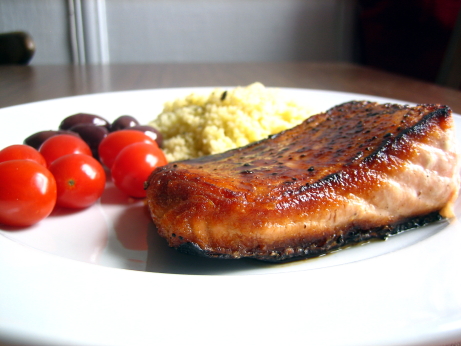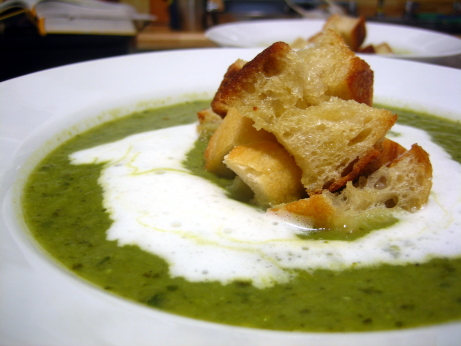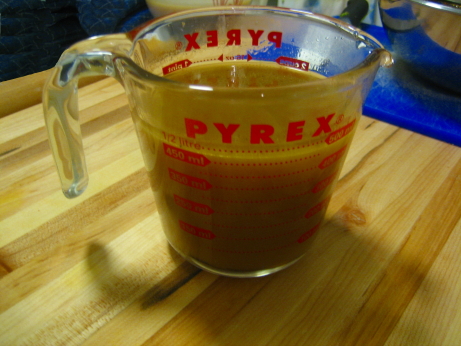Jacques Pépin said it best, if you’re going to fry fish, try to do it at the neighbours’ house. I was working from home the day I made this dish, and my dining companion wasn’t getting back until 9 pm so I decided to make fish for lunch. As regular readers know she’s not entirely comfortable with things that come from the sea, fish least of all. Salmon is her most hated fish, so I try to be polite about cooking it when she’s not around. The dish is as simple as it gets, requiring just a few pantry staples, and some nice Salmon fillets (I quartered the recipe and just made a fillet for me). All the recipe involves is seasoning the fillets with salt and pepper, pan frying them until they’re just cooked through, and once the salmon is out of the pan deglazing it with a mixture of balsamic vinegar, water, lemon juice, and light brown sugar. Once this sauce is reduced it’s spooned over the salmon and served.
What the book fails to mention is the billowing clouds of fish smoke that will fill your poorly ventilated apartment, and that the first thing your dining companion will say when she gets home is “gah, fish!”, or that your pillows will smell like fried fish, and that a week later the kitchen pantry will still have a faint fishy odor. The fish is seared over highest heat in a non-stick skillet (more cancer, yay!), and it started smoking right away. After the recommended 4 minutes the skin side of the salmon was black and charred, not seared. I reduced the heat a bit to cook the top side of the fillet, and got it out of the pan once it was nicely browned. When I cut into it the fish was still pretty much raw in the thicker part of the fillet. I only served myself the skinnier side which had cooked through. I made the pan sauce, and brushed a bit of it onto my fish, but it picked up a lot of the burned flavour from the pan, and I over reduced it as well (that pan was really hot).
I suspect that my modifications to the recipe got me into trouble. I was supposed to cook 4 fillets in a 12 inch skillet, but I did one fillet in an 8 inch skillet. With less fish per square inch to cool the skillet down the fish may have burned faster. I think my fillet was a more like 8 ounces than the recommended 6, which would explain the under cooking.
Despite the snafus, the fish tasted quite good. I peeled off the blackened skin, and the meat of the thinner half of the fillet was nicely cooked. Even with the slightly burned flavour the pan sauce worked well, it was a touch sweet for my taste, and if I made it again I’d increase the lemon juice, but it did compliment the salmon’s flavour nicely.
I guess this is one of those recipes that you can’t vary from too much. Many Epicurious posters appear to have had success, so I’m going to assume that this is just me. Make sure to cook the right number and size of fillets and you’ll probably be OK. Even done properly your house is going to stink though. I usually try to do this kind of smelly frying on the side burner of the grill, to better let the neighbours enjoy the fishy smell. Alas, I was out of gas the day I decided to make this. I was happy with the flavours of this dish, and it was dead simple, and lightning fast, but I was less happy with the fine film of fish oil that settled onto every horizontal surface in the whole house. I’ll plan on trying this one again and following the instructions more closely next time. For now I’ll give it at


